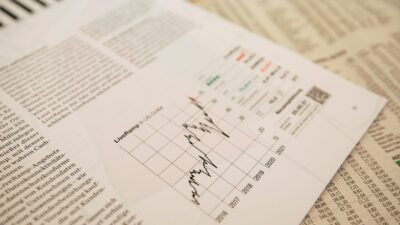
Working out the truth of The Great Resignation
Workers are resigning their jobs at historical rates. The COVID pandemic has burnt out employees or pushed people to rethink their work/life see-saw. And this mass exodus is leaving unprecedented gaps in the workforce – call the agents!
Rumours of a COVID-19 induced resignation have been greatly exaggerated.
In the US where 4.3 million Americans quit their jobs in August, a turnover rate of 3% is just slightly above pre-pandemic normal.
Currently Australia is averaging about 350,000 million vacancies a month, a jump on the quarter of a million in pre-COVID times. But job vacancies and churn are very different across the work landscape.
In August half the vacancies (373,000) came from just four industries: health, administrative services, retail and professional services. And the vacancy rate within these sectors is not all about a pandemic recovery churn.
Ill health
With 51,000 job vacancies, health had the biggest number of available jobs in August. But the number of health jobs provided by the sector fell by 27,000 between March and June.
Rich retail
While retail had ‘just’ 33,600 job vacancies, the number of jobs across the second quarter grew by 85,600, significantly above every other sector.
Inflated professional services
Professional services jobs showed a very slight growth for the second quarter of this year (just 1,300) and the vacancy rate (2.4%) on trend with their pre-COVID rate.
Administrative services – the quiet achiever
Not only do admin workers have the highest vacancy rate (3.8%), this is considerably greater than their ‘usual’ rate of between 2-3% over the last decade. Admin services also has the second highest growth in overall jobs with 42,100 more jobs coming on board in the second quarter.
Education’s loss
Education has not participated in any great resignation and their vacancy rate is a mere 0.7%. In the year ending March, 75,000 jobs were stripped from the education sector, most of them in post-school education, a loss of around 8%.
Why not The Great Reconstruction?
To the extent there is a recovery, it will be in retail, hospitality, admin services and construction. Where are these jobs nourished? In the vocational education sector – the very place that has been gutted by government policies that have fragmented the TAFE service model and lost millions to private sector racketeers.
In the depths of the COVID-19 crisis Australia displayed a capacity to act creatively, inclusively and big. It is vital we build on that prowess as we navigate future challenges, especially those arising from deepening climate change and the ever-mutating virus.
But hold on.
Those resignation numbers are looking a bit, well, loose. Turns out the US stats which started the story running (2.9% of the workforce had quit their jobs in August) were in line with the pre-pandemic trend of steadily rising employee turnover. This churn rate had started revolving before COVID hit, meaning the ‘I quit’ factor was only temporarily supressed due to pandemic pressures.
What is emerging, in Australia at least, is a more patchwork story with various industry sectors supporting very different employment narratives. And the labour market story they tell is equally compelling.
Listen to The Future, This Week with labour market expert Professor John Buchanan on The Great Resignation.
Some true facts
Australia’s job vacancy rate is on the rise. Before the GFC, Australia averaged about a quarter of a million vacancies per month. In the COVID ‘recovery’ period this has jumped to an average of 350,000 a month – a significant increase.
But job vacancies and churn are very different across the work landscape.
In August half the vacancies (373,000) came from just four industries: health, administrative services, retail and professional services. And the vacancy rate within these sectors is not all about a pandemic recovery surge.
Ill health
With 51,000 job vacancies, health had the biggest number of available jobs in August. But get this – the number of health jobs provided by the sector fell by 27,000 between March and June, making it the only sector to experience a fall in jobs worked. Moreover, health has the lowest vacancy rate (2.3%) of the four key sectors. Meaning all those stories of burnt-out nurses quitting in droves – that is true.
And while the inflow of recent nursing graduates is about equivalent to say the 25,000 critical care nurses who have quit – the years of specialised experience lost to the system will take years to replenish. Health care workers in particular develop deep skills that are not easily transferred or replaced.
Meaning the vacancies in health are due to critical pressures in the sector, not employment growth as such.
Rich retail
By contrast while retail had ‘just’ 33,600 job vacancies not only is its vacancy rate of 2.7% higher than in health, the number of jobs across the second quarter also grew by 85,600 – way above every other sector. Even so, expect slow service in shops and cafes over Christmas.
Inflated (sense) professional services
While stories of professional services employees (lawyers, the IT crowd and consultants) leveraging their labour market scarcity and demanding hefty pay rises or else they will pack their bags and take the next plane outta here – their vacancy rate of 2.4% is barely above the beloved nurses and less than their more garden variety ‘admin services’ brethren who enjoy the highest vacancy rate of 3.8%.
All up professional services jobs showed a very slight growth for the second quarter of this year (just 1,300) and the vacancy rate (2.4% ) is very much on trend with their pre-COVID rate (in fact it was the same in September 2018). So while there were 31,700 jobs advertised in August, not much has changed jobs-wise for the professionals other than their sense of grievance.
Like in health, the story is more about churn than a surge in demand for their labour, which is also reflected in the LinkedIn data (which rather skews towards professional service workers) showing job movers went up by 26% over the last year.
Administrative services – the quiet achiever
Not only do admin workers have the highest vacancy rate (3.8%), this is considerably greater than their ‘usual’ rate of between 2-3% over the last decade. And while they are running second to health in the number of vacancies (36,800) they have the second highest growth in overall jobs with 42,100 more jobs coming on board in the second quarter.
Education, the great job loss
Education has not participated in any great resignation, churn or otherwise and their vacancy rate is a mere 0.7%. But we must be careful in interpreting this figure: nearly all the job losses have been in post school education – a sector profoundly hit by COVID. In the year ending March, 75,000 jobs were stripped from the education sector, a loss of around 8%.
And while the Government poured hundreds of millions of dollars into the travel industry which was slammed by COVID-19, no such support was allocated the post-school education sector that had also lost access to its international (student) market.
Like the health sector, teachers take years to train and more to specialise on the job. Replacing this expertise takes years.
Where will the COVID recovery happen?
The Federal government has ensured that this will not be an education-led recovery in terms of jobs growth. To the extent there is a recovery, it will be in retail, hospitality, admin services and construction. Where are these jobs nourished? In the vocational education sector – the very place that has been gutted by government policies that have fragmented the TAFE service model and lost millions to private sector racketeers.
Recessions leave long legacies in the labour market. A significant proportion of those thrown out of work become long term unemployed. Currently 800,000 people have been on income support for 12 months or more. Considerably more work needs to be done to address this challenge. After each of the major recessions of our times insecure work has got worse. Casualisation expanded and became entrenched after the downturn of the 1980s. Under-employment has been baked into the labour market since the 1990s recession.
Forget the Great Resignation, it’s time for the Great Reconstruction
Instead of talking about the Great Resignation we should be talking about the Great Reconstruction. Unless we embark on something serious, the patterns of past are set to continue. After the deep recessions of 1890s and 1930s Australia built institutions that defined us as country, that not only prospered – but also shared that prosperity relatively fairly: publicly defined labour standards (awards) enforced by unions and an active and expanding welfare state transformed our economy and society. In the depths of the COVID-19 crisis we displayed a similar capacity to think creatively, inclusively and big. It is vital we build on that prowess as we navigate future challenges, especially those arising from deepening climate change and the ever-mutating virus.
This is part of a series of insights related to Coronavirus (COVID-19) and its impact on business.
John is the Co-Director of the Mental Wealth Initiative and a Professor in the Business Information Systems Discipline at the University of Sydney Business School. John is an expert in labour market structuring and its implications for skills and education. Current research interests include the future of expertise and social solidarity in a world of mass underemployment and AI.
Share
We believe in open and honest access to knowledge. We use a Creative Commons Attribution NoDerivatives licence for our articles and podcasts, so you can republish them for free, online or in print.







